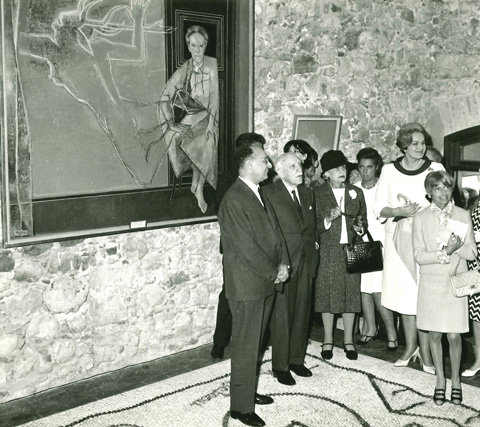The Bastion, a legacy museum
In 1957, as Jean Cocteau’s work on the decoration of the town hall’s wedding hall was nearing completion, the mayor of Menton came to him with a new offer: "Palmero offers me this morning to create in Menton a museum of my art in the small fort located at the end of the seawall between the port and the promenade." The poet showed enthusiasm: "It’s a beautiful ruin and if it gets repaired I will soon transform it."
The idea of a museum dedicated to his works appealed to Cocteau for several reasons. It was first and foremost an exceptional mark of respect shown to an artist in his lifetime, but also a solution to the problem of conserving and showcasing his works, as he was deeply concerned with what would happen to them after his death.
Cocteau collaborated with architect Henri Février to conceive the essence as well as the inner workings of the projected museum. Two phases of restoration work were carried out in 1960 and 1961 — the first one to rebuild the crenellation and turrets on the roof, and the second one focused on interior layout. Cocteau was very pleased with the result: "The Bastion that juts out towards the sea, Palmero has restored it, not as new, but as old. It is like it was in olden days, a place I find gorgeous." He designed the pebble mosaics that make up its decor and selected the works he wished to exhibit there.
Cocteau passed away in 1963, leaving the project unfinished. With the help of Édouard Dermit, his legatee, the town council completed work following the artist’s directions, and the museum was inaugurated on 30th April 1966.
